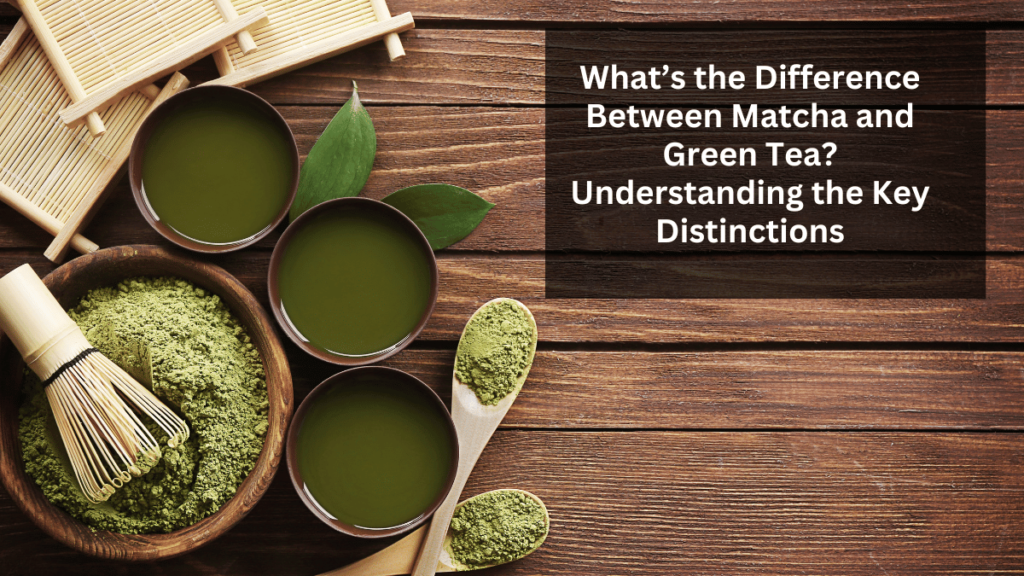When it comes to enjoying a cup of tea, green tea and Matcha are two popular choices that often come up in conversation. Both are derived from the Camellia sinensis plant but offer distinct flavors, preparation methods, and health benefits. Understanding the differences between these two types of tea can enhance your appreciation of their unique qualities.
Origins and Cultivation
Green Tea: A Traditional Favorite
Green tea is one of the most widely consumed beverages in the world, especially in Asian cultures. The leaves are harvested from the Camellia sinensis plant, where they are quickly steamed or pan-fried to prevent oxidation, preserving their green color and fresh flavor. This process helps maintain the natural compounds that contribute to its health benefits.
Matcha: A Ceremonial Beverage
On the other hand, Matcha is a form of powdered green tea with a long history in Japanese tea ceremonies. The cultivation of Matcha is unique; about three weeks before harvest, the tea plants are shaded from direct sunlight. This process increases the chlorophyll levels, giving the leaves a vibrant green color and enhancing the amino acid content, particularly L-theanine. Once harvested, the leaves are steamed, dried, and stone-ground into a fine powder.
Processing and Preparation
Green Tea: Simple and Quick
Green tea leaves are usually steeped in hot water for a few minutes, allowing the flavors and nutrients to infuse into the water. The tea is then strained and enjoyed as a light, refreshing beverage. The taste of green tea can vary depending on the variety, with some being more vegetal and others having a more floral or grassy note.
Matcha: A Ritual in a Cup
Preparing Matcha is more involved and can be seen as a meditative process. The powder is sifted into a bowl and mixed with hot water using a bamboo whisk, called a chasen until it becomes a frothy drink. Unlike green tea, where the leaves are removed, with Matcha, you consume the entire leaf, resulting in a more concentrated source of nutrients.
Nutritional Content and Health Benefits
Green Tea: A Rich Source of Antioxidants
Green tea is renowned for its high levels of catechins, particularly epigallocatechin gallate (EGCG), a powerful antioxidant. These compounds have been linked to various health benefits, including improved brain function, fat loss, and a lower risk of certain cancers. A typical cup of green tea contains around 20-45 mg of caffeine, making it a gentle stimulant.
Matcha: Nutrient-dense powerhouse
Since Matcha involves consuming whole tea leaves, it provides a more potent nutritional profile than traditional green tea. A single serving of Matcha contains higher concentrations of vitamins, minerals, and antioxidants. For example, the amount of EGCG in Matcha can be up to 137 times greater than in some green teas. Additionally, Matcha provides a calm energy boost due to the combination of caffeine and L-theanine, which promotes relaxation without drowsiness.
Flavor Profiles and Culinary Uses
Green Tea: Subtle and Versatile
Green tea’s flavor is generally mild, making it a versatile ingredient in various culinary applications. It can be enjoyed hot, iced, plain, or with added flavors like lemon or honey. Green tea is also used in cooking, particularly in desserts like green tea ice cream or cakes, where it imparts a delicate flavor.
Matcha: Bold and Earthy
Matcha has a more robust, earthy flavor than green tea. It’s enjoyed as a traditional hot beverage and is a popular ingredient in modern cuisine. Matcha’s vibrant color and distinct taste make it a favorite in lattes, smoothies, baked goods, and even savory dishes. Its strong flavor can stand up to other bold ingredients, creating unique and visually appealing culinary creations.
Environmental Impact and Sustainability
Green Tea: Widespread Cultivation
Green tea is grown in many parts of the world, with major producers in China, Japan, and India. The widespread cultivation and different production methods can lead to variability in quality and sustainability practices. Some regions focus on organic and eco-friendly farming, while others may rely on more conventional methods.
Matcha: Labor-Intensive and Quality-Focused
Matcha production is more labor-intensive, particularly due to the shading process and the need for high-quality leaves. Most Matcha is still produced in Japan, where strict quality control measures ensure that only the best leaves are used. However, this intensive cultivation also means that matcha production can have a higher environmental impact, especially if not managed sustainably.
Caffeine Content and Impact
Green Tea: Mild Stimulant
Green tea contains moderate caffeine, generally between 20 and 45 mg per cup. This amount provides a gentle energy boost without the jittery effects often associated with higher caffeine levels. Combining caffeine with the amino acid L-theanine in green tea promotes alertness while supporting relaxation, making it an ideal choice for those who want a calm yet focused state of mind.
Matcha: Higher Caffeine for Sustained Energy
Matcha has a higher caffeine content than regular green tea, with approximately 70 mg per serving. This higher dose of caffeine, coupled with L-theanine, offers sustained energy without the typical crash that follows coffee consumption. The presence of L-theanine moderates the absorption of caffeine, leading to a more balanced and prolonged energy boost. This makes Matcha an excellent choice for those who need a steady flow of energy throughout the day.
Shelf Life and Storage
Green Tea: Limited Freshness
Green tea leaves have a relatively short shelf life and are best consumed within six months to a year after purchase. Exposure to light, air, and humidity can degrade the quality of green tea, leading to a loss of flavor and nutritional value. Green tea should be stored in a cool, dark place in an airtight container to maintain its freshness.



